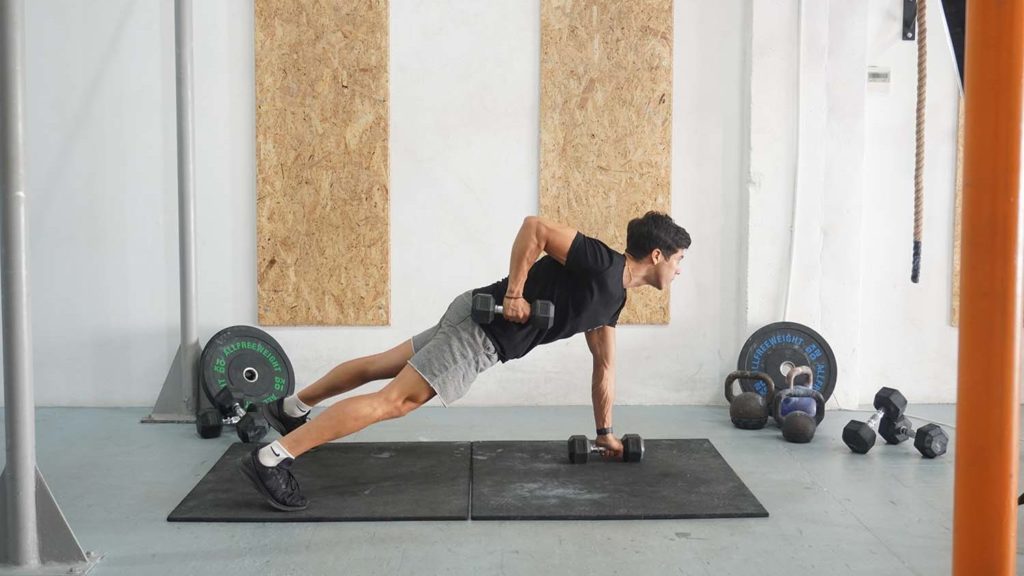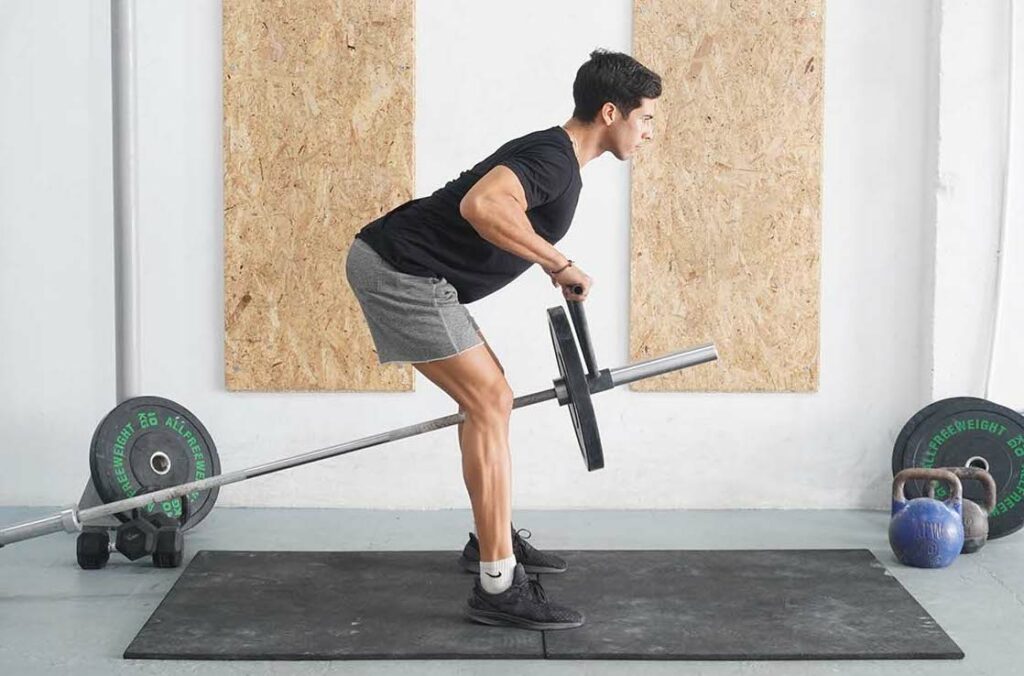The Benefits of doing Chest-Supported Incline Row with Dumbbells
At first glance, the chest-supported incline row doesn’t seem like much: you’re using a pair of dumbbells to train your back. But if you look at the movement more closely, you realize how different it is from most rowing exercises.
The most notable advantage of the chest-supported row is that you don’t have to worry about keeping your torso stable. Supporting your torso on a bench prevents any stress on your lower back and allows you to direct your focus to the act of pulling the weight.
Having your torso on a bench is also great for preventing the use of momentum, which often comes during back exercises. Instead of swinging back and forth, your torso is stationary, and your back and biceps have to work extra hard on every repetition.
How to do a Chest Supported Incline Row with Dumbbells
- Set an adjustable gym bench at an incline of around 30 to 35 degrees.
- With a dumbbell in each hand, carefully lie on the bench with your chest facing it.
- Position your chest against the top of the back support and the balls of your feet against the floor. Be careful of the bench sliding forward as you position yourself on it.
- With your body supported on the bench, straighten your arms and position them at your sides.
- Engage your abs, squeeze your glutes, and bring your shoulders back.
- Take a breath and row both dumbbells simultaneously until your elbows are at torso level.
- Hold the top position for a moment and release the dumbbells slowly, exhaling on the way down.
- Take another breath and repeat.
- Once finished, get off the bench with the dumbbells in your hands or drop them on the floor first.
What muscles does the chest-supported incline row activate?
The primary muscle group that works during the chest-supported incline row is the latissimus dorsi, the largest muscle in the upper body. Our lats originate from the lower back and insert into the humerus (upper arm bone). Their main functions relate to arm motions: adduction, extension, and rotation (1). Pulling movements like the chest-supported row force our lats to work hard in lifting the weight to torso level.
The second pair of muscles that work hard during a chest-supported row are the biceps, which cover the upper arms’ front side. The muscle’s primary function is elbow flexion, which occurs when pulling the dumbbells (2).
Our trapezius, rhomboids, rear deltoids, infraspinatus, and erector spinae also contribute, mainly in keeping our shoulder blades back. The glutes, rectus abdominis, transverse abdominis, and obliques also assist during the motion. These muscles play an essential role in keeping our body rigid by flexing isometrically.
Proper Alignment while doing a Chest-Supported Incline Row with Dumbbells
Many people struggle to assume the correct position because they don’t know how to align themselves correctly. The goal here is to straighten your body as much as possible. Your shoulders, hips, knees, and ankles should be in a straight line. You will have to bend your knees if you’re a particularly tall lifter. But everyone else should strive for a straight body.
Aside from that, you should also make sure to keep your shoulders back throughout each set. Doing so will keep your shoulders in a safe position and allow you to engage your back muscles better.
The third thing to keep in mind is your arm position. Some trainees misalign their arms by shrugging their shoulders or flaring their elbows. In doing so, the dumbbells travel to the sides, which shifts the emphasis to the shoulders and biceps. Instead, you should keep your elbows close to your body and shoulder blades down and back. The position will make it easier for you to engage your lats better, forcing them to do all the work.
Variations and Modifications of the Chest-Supported Incline Row with Dumbbells
1. Chest-Supported Incline Row With a Pause
The most straightforward variation of the chest-supported row is the one with a pause at the top position. Instead of lifting the dumbbells and allowing them to drop immediately, you hold the contraction for two to three seconds. Doing so is beneficial for improving mind-muscle connection and hopefully building more muscle mass.
2. Single-Arm Chest-Supported Incline Row
The single-arm chest-supported row is a good variation that allows you to focus on one side at a time. The movement is particularly beneficial for trainees who struggle to activate their back. Training with one dumbbell at a time is also suitable for improving core stability because your midsection has to work extra hard to keep you stable.
3. Chest-Supported Incline Row With a Slow Negative
Doing incline rows with a slow negative is also great. Lift the dumbbells, hold for a moment, then gradually lower the weights over three to four seconds. The variation improves the mind-muscle connection and forces all involved muscles to work extra hard.
Mistakes to Avoid
The most common mistake with the chest-supported incline row is using too much weight. Supporting your torso on a bench prevents you from using momentum, and you cannot lift as much weight. So, start with a pair of light dumbbells to learn the exercise and increase the resistance gradually.
Another mistake related to the incline row is pulling the dumbbells too high. Trainees flare their elbows to their sides and shrug their shoulders, emphasizing the shoulders and biceps. Keep tension on your lats by having your elbows to your sides and row the dumbbells to your hips.
The third mistake to avoid is lifting your chest off the bench and hyperextending your lower back. Trainees often make this mistake when using too much weight to compensate and complete each repetition. But doing so puts stress on the lower back, and that could lead to an injury. Avoid the mistake by keeping your chest in contact with the bench throughout each set.
Similar Exercises to the chest-Supported Incline Row with Dumbbells
Renegade Row

The renegade row is an effective full-body exercise that strengthens your core and works your back. The goal is to get into a push-up position with a dumbbell in each hand (preferably, a hexagonal one). You then row one dumbbell at a time while supporting your upper body on your other arm.
T Bar Row

The T bar row is another effective exercise that trains your entire back. You need a landmine attachment to anchor the barbell to the floor. Alternatively, you can use a T bar row machine if your gym has one. You then have to bend forward, grab the barbell, and begin pulling it to your chest. The exercise is excellent for strengthening your abs, training your erector spinae, and working your upper back.

